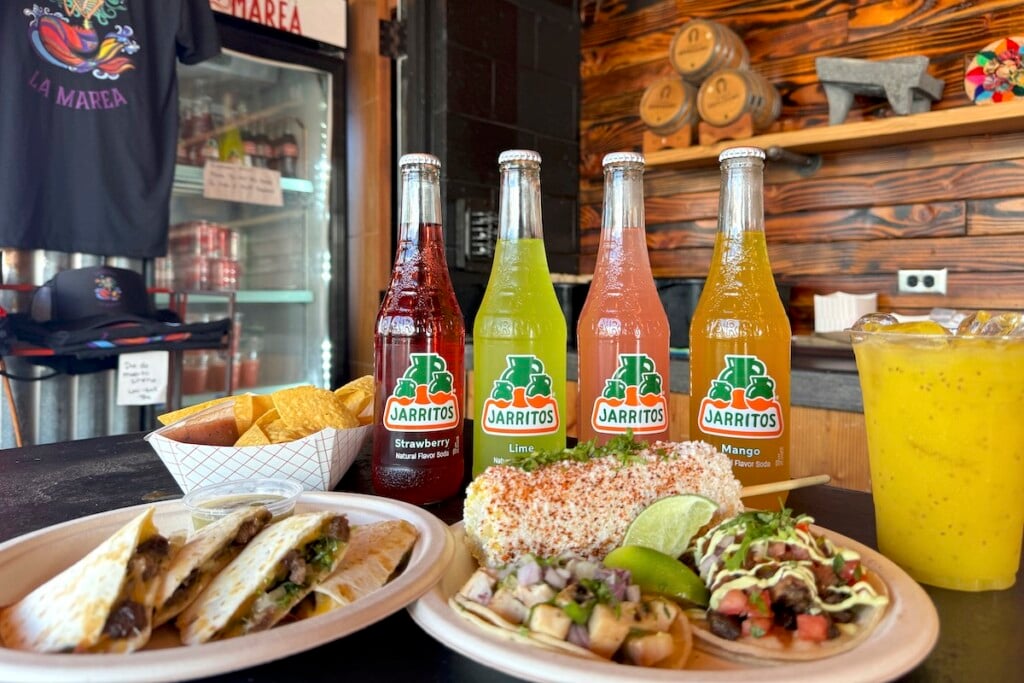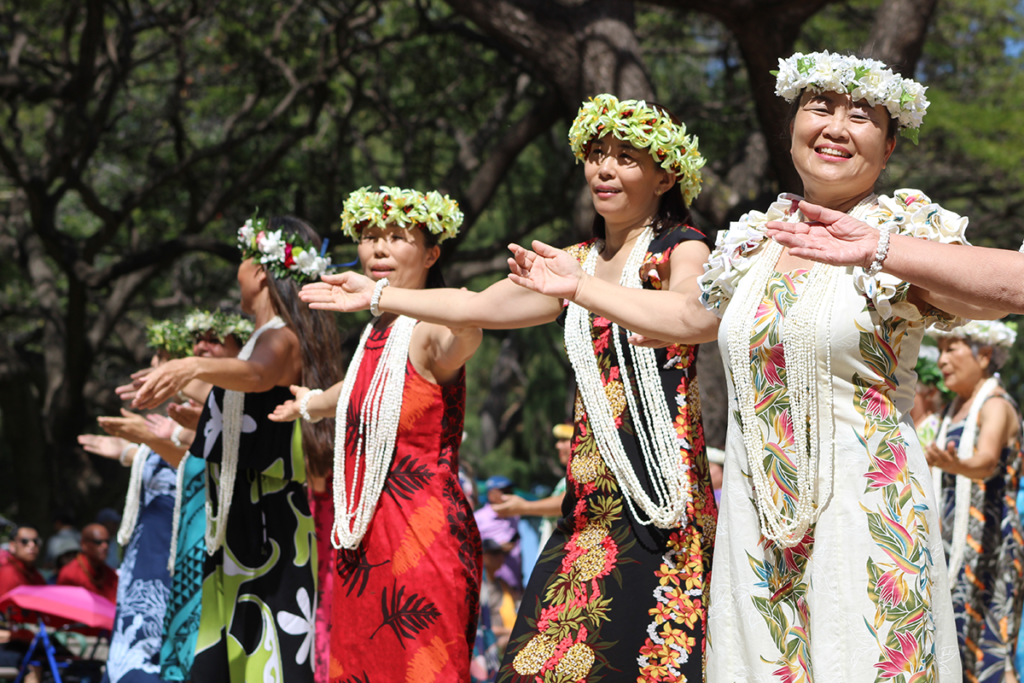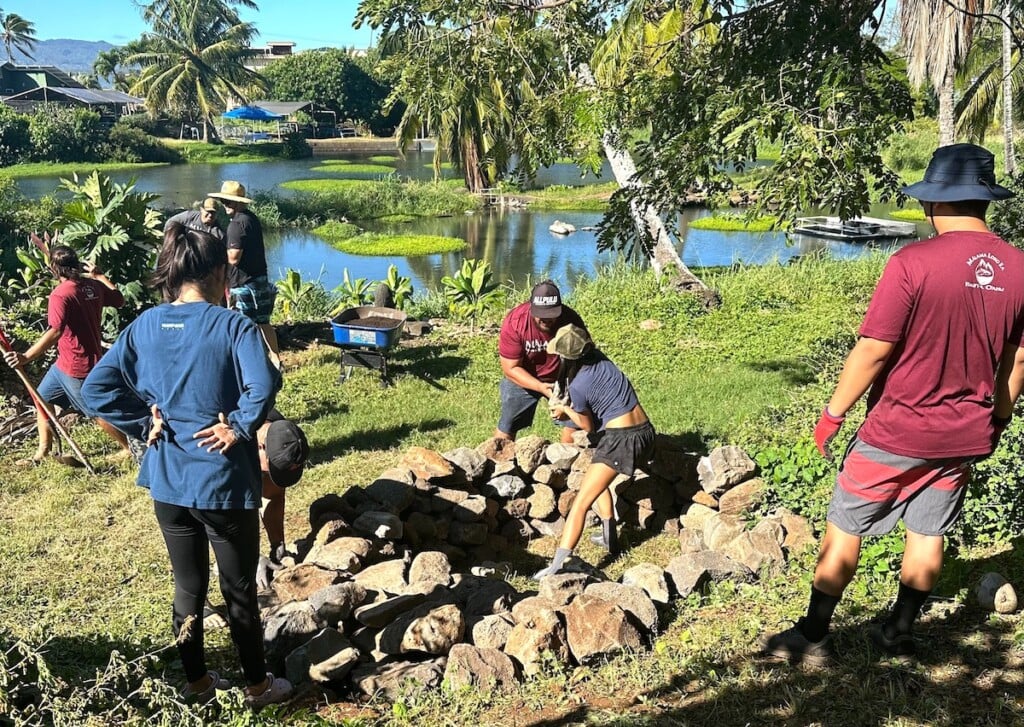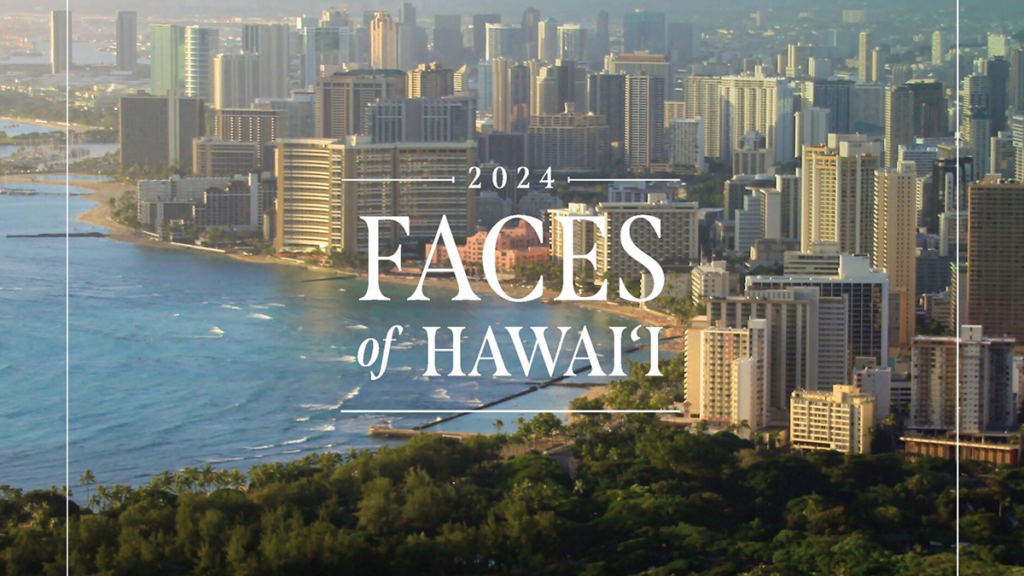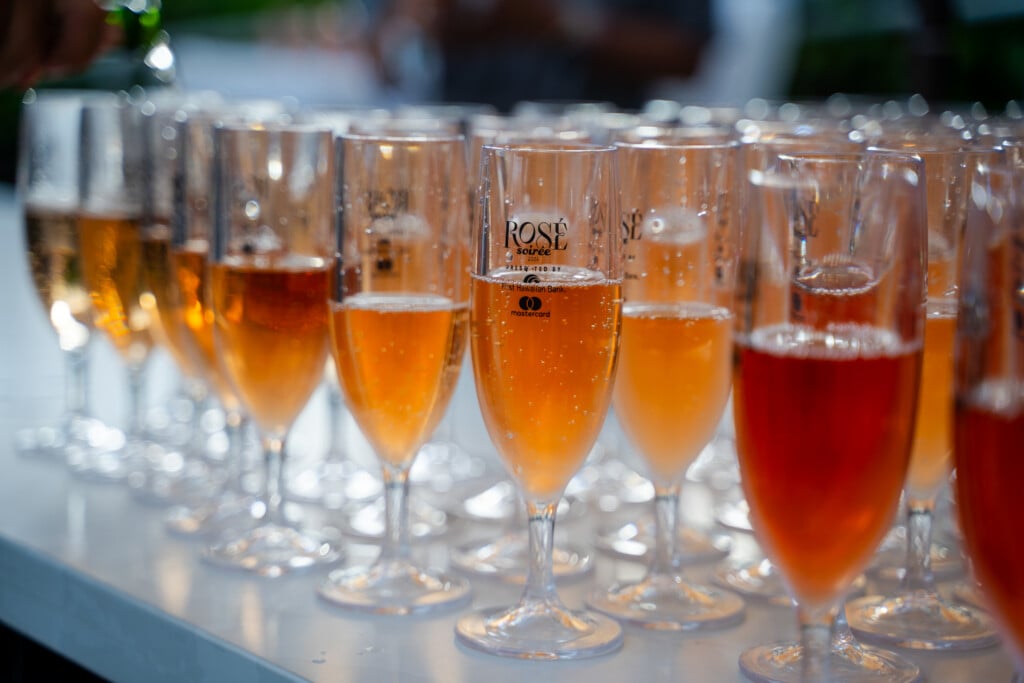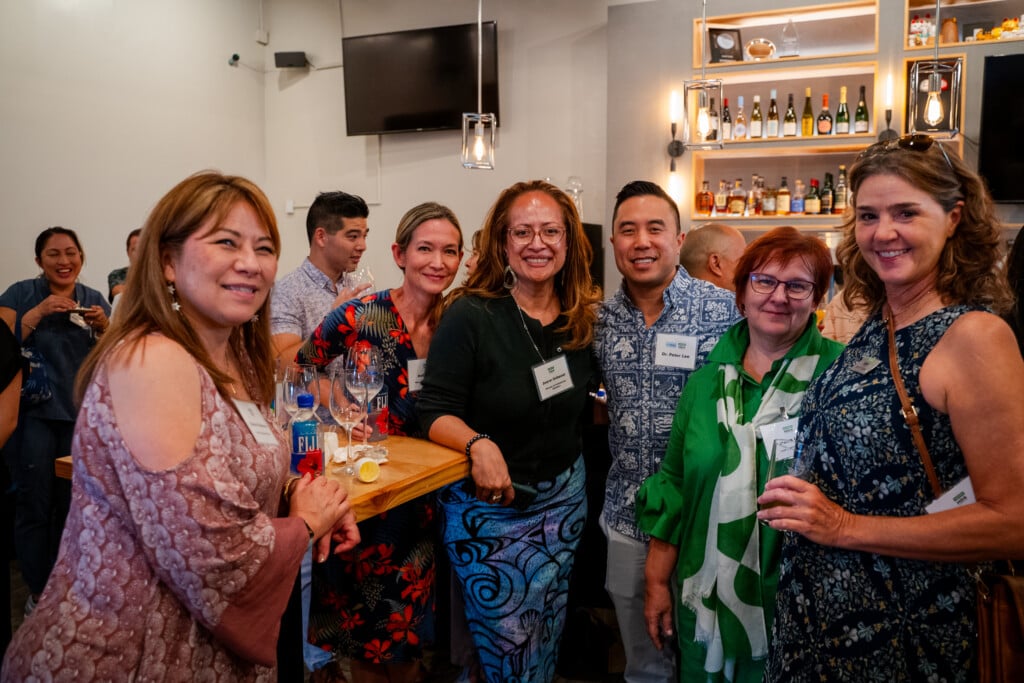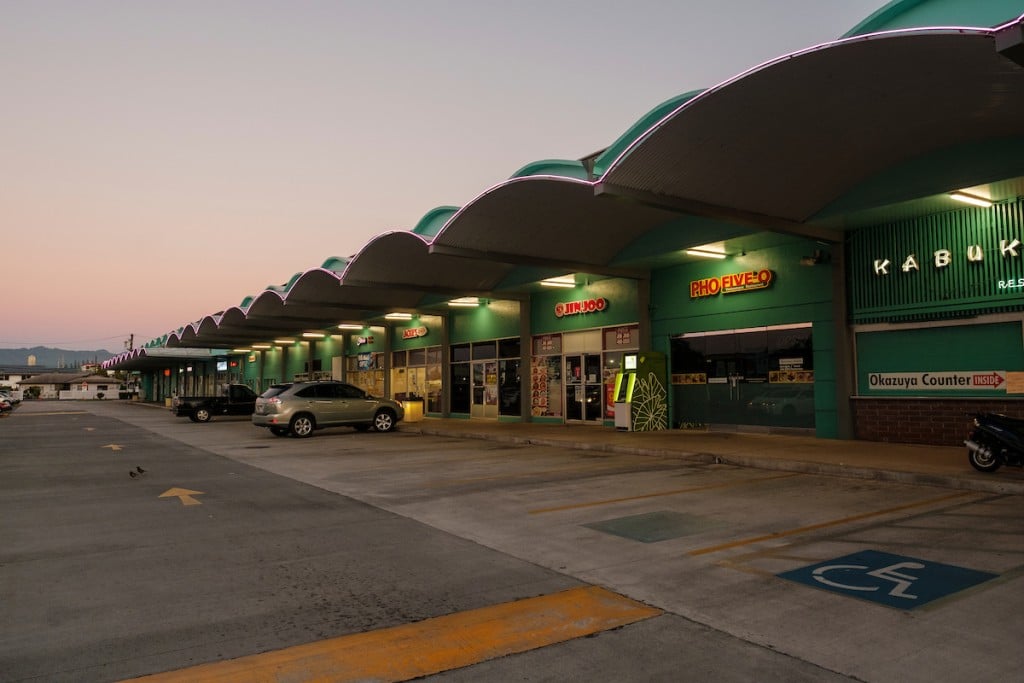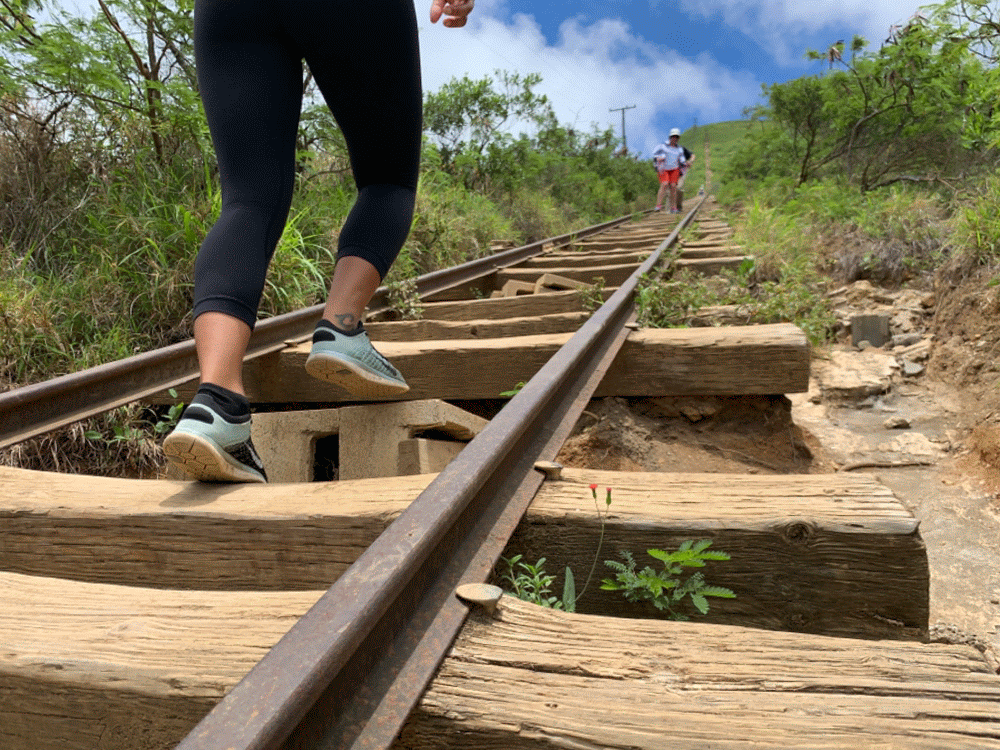The Unlikely Story of How the Hawai‘i Symphony Orchestra Came Back to Life
Five years after declaring bankruptcy, the newly renamed Hawai‘i Symphony Orchestra is not only on budget, it’s traveling to perform on the Neighbor Islands again, hosting internationally renowned guest musicians and attracting new audiences. What happened?

THE HAWAI‘I SYMPHONY ORCHESTRA PERFORMED TWO HOLIDAY POPS CONCERTS IN DECEMBER.
PHOTOS: KENT NISHIMURA
In 2009, after more than 100 years, the Honolulu Symphony succumbed to insurmountable financial struggles and filed for Chapter 11 bankruptcy. Despite the board of directors’ best efforts to turn things around and a hope-filled reorganization plan, one year later, the symphony converted to liquidation. Now, five years later, the renamed Hawai‘i Symphony Orchestra is not only on budget, it’s traveling to perform on the neighbor Islands again, hosting internationally renowned guest musicians and attracting new audiences with its musicthatPOPS series. What happened?
On a warm December evening, small groups gather outside the Blaisdell Concert Hall.
It doesn’t quite feel like the holidays yet, except for a few trolleys decked out in multicolored lights that roll by, jolly riders belting out carols as they pass. All else is calm, but there’s a quiet excitement as the doors open and people start to filter into the lobby for Hawai‘i Symphony Orchestra’s Holiday Pops concert.
Inside the hall, there’s a wash of “ooh”s as everyone looks up and sees bright snowflakes projected above the stage, red lights and festive decorations galore. As at other concerts, the audience is made up of season ticket holders and newcomers alike, a largely older crowd peppered with a few young faces in the mostly full hall.
On stage, the Hawai‘i Symphony Orchestra awaits guest conductor Rob Fisher, a musical theater Grammy-nominated music producer, director, conductor and pianist. As he begins, the musicians move as one, their fingers in sync with the reverberating sounds that fill the hall. Since this concert is part of HSO’s musicthatPOPS series, many of the songs are well-known hits and modern pieces, including music from movies The Nightmare Before Christmas, The Polar Express and Home Alone. The orchestra even sings along and strikes glass jars with spoons during “Jingle Bells.” Hawaiian music trio Na Leo Pilimehana joins the orchestra for the second half of the evening, which also includes a hula performance by kumu Kapua Dalire-Moe. It’s quite a show, offering audiences much more than symphony classics.
The performance ends with a sing-along of “Mele Kalikimaka” and two standing ovations from the audience. On such a successful night, one might never guess that, exactly five years before, the orchestra called it quits and went silent after more than a century as Hawai‘i’s premier symphony.

Members of the Hawai‘i Symphony Orchestra rehearse with guest conductor Rob Fisher.
The aughts were unkind to the Honolulu Symphony. After more than 40 years of performing at the Blaisdell Concert Hall, built specifically with the symphony in mind in 1964, the first major sign that things were heading downhill came when Disney’s Broadway blockbuster The Lion King took over the space for three months during the 2007–2008 season. Performing in alternate venues cost the Honolulu Symphony Society—the organization that managed the symphony—more and brought in less. For 11 weeks, there just wasn’t enough money to pay the orchestra, so the musicians played for free.
Then came the recession.
Donor dollars dried up, fewer people attended concerts, and the musicians took pay cuts and gave up their benefits to make ends meet. With a budget of around $8 million, plus mounting debt from seasons past, even a $2.7 million advance from the Honolulu Symphony Foundation couldn’t get the Honolulu Symphony Society out of the hole. Contract negotiations with the musicians union soured and, by 2009, it was more than $1 million in debt.
In an attempt to reorganize and come up with a new financial plan, the society filed for Chapter 11 bankruptcy that December. One year later, in 2010, instead of presenting its new plan for moving forward, HSS converted to Chapter 7 liquidation and put its assets up for auction. Just like that, the Honolulu Symphony was no more.

Photos: Kent Nishimura
It was a great loss,” says Ignace “Iggy” Jang, concertmaster of the orchestra. Like many of the musicians, he moved to Hawai‘i specifically for this job and thought there was enough support to sustain a symphony of its caliber. “We agreed to take a lot of cuts at the end of the Honolulu Symphony, expecting that things would help.” The first bankruptcy filing was meant to be a time of regrouping, but the organization’s eventual demise turned into a double blow to the musicians, and many of them left the Islands. “In all the places I’ve been, it’s not just a privilege to have a symphony in your environment, it’s a right,” says Jang, who grew up in France and was living on the Mainland until he moved here in 1997. For two and a half years, Hawai‘i was the only state in the country that didn’t have a professional orchestra. “What I found out later is a lot of people in the community missed it. But then, if you don’t have something, at first people start to miss it, but then they forget about it.”
Vicky Cayetano, president and CEO of United Laundry Services and current vice chair of the Hawai‘i Symphony Orchestra board of directors, knew that supporters needed to act swiftly if they were going to start up again. “There are a number of reasons why the symphony is valuable besides going to concerts and enjoying these wonderful artists,” she says. “They’re the backbone of music education for our children, and, I think, Hawai‘i being such a tourist destination as well, it’s important to be able to offer our visitors high music quality.”
The Hawai‘i Symphony Orchestra’s executive director, Jonathan Parrish, credits Cayetano with being the first community leader, along with HMAA’s John Henry Felix, to meet with the musicians as far back as 2009, to begin discussing a way forward. “We have to have an orchestra,” he says. “It provides a critical mass of talent that makes many other things possible,” such as the Hawai‘i Youth Symphony, the opera and ballet, Chamber Music Hawai‘i, choral music, faculty at UH and HPU. There’s a ripple effect, Parrish says. By his estimate, about one-fourth of the current orchestra is made up of musicians from Hawai‘i. “Our auditions are anonymous and behind a screen. They’re international. That such a significant portion of the orchestra is a Hawai‘i product speaks to the value of the many decades of having a professional orchestra in town.”

Revival of the symphony began with a diverse group of community and business leaders led by Paul Kosasa, president and CEO of ABC Stores, Cayetano, and others, including Oswald Stender, Mark Polivka, Ken Robbins, Mona Abadir, John Koga and Mitch D’Olier. After Chapter 11, “We very informally got together and asked ourselves a question: Should Honolulu, as a city of its size and population, have a professional resident orchestra? The answer was yes,” Kosasa says. But before a solution could be reached, HSS had converted to Chapter 7, so the new plan was to acquire the Honolulu Symphony’s assets, which were to be auctioned. They bid for all of the assets, the most important being the music library, which consisted of hundreds of scores, including unique and rare arrangements. “We were kind of worried that we might lose the bid,” Kosasa says, “but, as it turned out, we were the only bidder,” at $210,000, provided by the Kosasa Foundation. They also acquired instruments. “Then we had to figure out, now what? That’s where Steve Monder came in.”
Monder, former president of the Cincinnati Symphony Orchestra, flew to Honolulu to advise the Symphony Exploratory Committee on how to revive an organization that had crashed so hard it left a bad taste in the mouths of the musicians and the community. He signed on as president of the board of directors and, after they’d worked out a collective-bargaining agreement with the musicians union and received some money from the Harold K.L. Castle Foundation, the new Hawai‘i Symphony Orchestra performed a few concerts.
“We had a very, very rough start,” says Kosasa—now chair of the board of directors—including a bare-bones staff and a shortened first season in early 2012, and “we still ended up in debt. A couple of board members lent money to clear our debt, and then the following year, we went dormant. We had to just reorganize ourselves again.”
The next step was hiring an executive director. “At the time the symphony shut down, I was an elected representative of the musicians, and I was the spokesperson for the musicians during the bankruptcy time,” Parrish says. “I think the fact that I’m now the executive director indicates there’s a great deal of cooperation going on between the board and the musicians and the musicians association.” And that meant a big change in his own career. “I took the job and gave up performing—which was not easy, I’ve had a 30-year performing career and that’s the way I’ve made my living for many years—to do this because I felt it was really important and I was in a unique position to be able to have a positive impact.”
And he has. Parrish has taken the orchestra places it hasn’t been in many, many years, including Kailua and the Neighbor Islands. “We want to live up to our name as the Hawai‘i Symphony Orchestra,” he says, which means more performances throughout the state. The symphony used to perform regularly on Kaua‘i, and was one of the first groups allowed to visit the island after Hurricane ‘Iniki. The orchestra held a free concert there for 5,000 people. It was finally able to return to the Neighbor Islands this season. “The great challenge is rebuilding confidence in the idea of an orchestra.”

Photos: Kent Nishimura
To do that, HSO had to start performing, whether there was enough money to sustain a full season or not. Kosasa says they took the risk because they felt that, if they could present something to audiences and get some exposure, show people that the symphony was back and managed properly, they could get some support. It worked and, along with some donations, grants started coming in.
For the past three years, each season has ended in the black, all debts settled. “That’s what our objective is, so we don’t carry over the deficit. That’s kind of what got the last organization, I think, into some problems,” Cayetano says. They’ve accomplished this by holding concerts less frequently. “In the process of doing that, the budget was reduced very significantly,” to around $3 million or $4 million. The staff has also been reduced to be more efficient and leave the majority of the budget to the musicians’ salaries.
“The musicians did make a huge sacrifice,” Kosasa says. “They basically cut their salaries in half. Compared to a full season, they’re really only doing half seasons. To their credit, they’re hanging in there.” Of the 72 musicians employed by the Symphony before the bankruptcy, 48 remain, with fewer than 10 resigning (others have taken leaves of absence, retired or passed away). Jang says there isn’t enough consistent work for everyone to come back full time, especially those with families, but the symphony is rebuilding, hiring replacements as auditions continue.
Fundraising pays for most of HSO’s operations (about 65 percent), but they also have to sell concert tickets to be successful. To appeal to more diverse audiences, HSO began the musicthatPOPS series, which this season has included a performance of The Nightmare Before Christmas’ entire score while the film was projected onscreen, and Disney in Concert: Tale As Old as Time. That’s on top of the Halekūlani Masterworks, which brings in world-class guests including soprano Sumi Jo and guitarist Pablo Villegas to accompany performances of classics from Beethoven, Mozart, Bach, Tchaikovsky and more. Even with these guests, the star is still the orchestra. Cayetano says, “Even Pablo Villegas said that to the audience— ‘You have such an outstanding group of musicians behind me.’ And sometimes, if we [don’t] have the opportunity to hear other artists, we don’t realize how good our musicians are.”
The orchestra’s mission also includes reaching out to the community. “Every year, we’ve been able to serve more students,” Parrish says. “We visit schools with small ensembles and we hope to soon begin to bring students to the concert hall to experience the orchestra.” There are also $13 student rush tickets to concerts. “We’re finding as many ways as we can to broaden our educational work. It’s certainly a very important part of what we want to accomplish,” along with serving all demographics and socioeconomic levels.

We’re a different board, a different organization,” Kosasa says. “We’re a startup,” an odd fact, considering the symphony’s 115-year history.
“That’s one of the challenges,” Parrish says. “People see the concerts and they assume the symphony is back. But it’s not quite that simple.” The Hawai‘i Symphony Orchestra virtually started from scratch, not even knowing the names or contact information of former season ticket holders, so there was no way to reach out to them. It’s going to take time to build that support back up, and the orchestra is in constant need of donations to survive. But it’s gotten very organized in rebuilding its support network. For instance, if you purchase tickets to the symphony online, you’ll soon receive a fundraising packet in the mail, explaining the different donor levels and the benefits of giving. The pitch: “The more you give, the more we give back.”
 |
As a musician, Jang believes the symphony still has a ways to go before its quality is where he wants it to be, but he appreciates the support from the board and the direction of artistic adviser JoAnn Falletta. He compares the symphony to a professional sports team: “If all of a sudden you don’t play at all, you have to get back in shape. The regimen it takes to be in shape personally and as a group … At first it was difficult because we had so few weeks, we’d get together one week and then assemble a concert, but we didn’t have that continuity in order to mesh and blend.” It’s also difficult to recruit new, young musicians with such a high cost of living here.
But the administrators and musicians are determined to move forward, with the possibility of someday taking the orchestra beyond Hawai‘i. Jang says more people are seeing the value of the symphony and realizing such high quality is not free. Newfound and returning community support, combined with a new board and administration that learned from the previous organization’s mistakes, a smaller season and staff, a diverse repertoire, and a focus on the musicians are what Cayetano says have made this comeback possible.
“The musicians have been extremely flexible and have made major sacrifices to allow this to happen because they believe in this orchestra and the purpose of it and the need for it in this community,” Parrish says. “I think we have great potential with this orchestra to do great things.”
What’s next this season
This month, the Hawai‘i Symphony Orchestra performs its fourth of six pops concerts and its eighth of 12 masterworks concerts for 2015–2016, its most robust season yet. On Feb. 26 (7:30 p.m.), world-famous Canadian Brass joins the orchestra for an entertaining evening of the unexpected. We especially like the quintet’s version of Lady Gaga’s “Bad Romance,” dubbed “Brass Romance”—watch it on YouTube.
On Feb. 27 (7:30 p.m.) and 28 (4 p.m.), violinist Cho-Liang “Jimmy” Lin will perform a program featuring Mozart’s Violin Concerto No. 4 in D Major and Mahler’s Symphony No. 5 in C-Sharp Minor with the Hawai‘i Symphony Orchestra. James Feddeck conducts both the pops and the masterworks concerts at the Blaisdell Concert Hall.
“It’s important to diversify your repertoire,” says Vicky Cayetano, vice chair of HSO’s board of directors. “It’s great to have this high-quality, technically perfect music, but there has to be some entertainment value, too, and to reach out to the next generation. I think that’s what our symphony has really strived to do.”
For the rest of the season’s schedule, which continues through June, go to hisymphony.org.
READ MORE STORIES BY KATRINA VALCOURT
